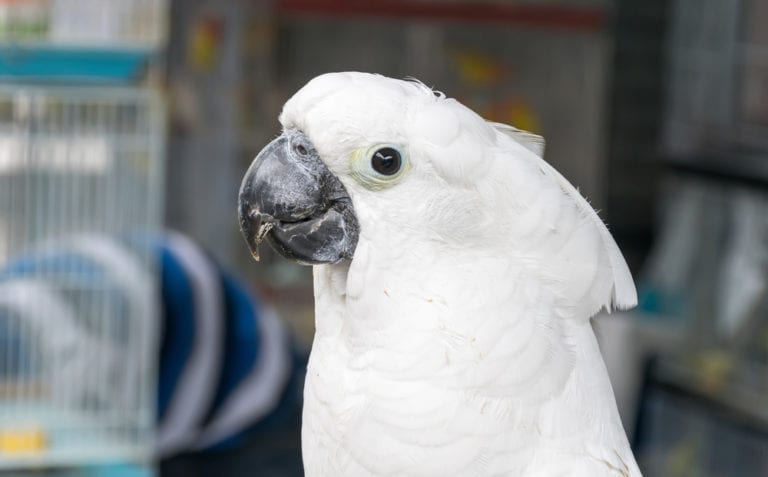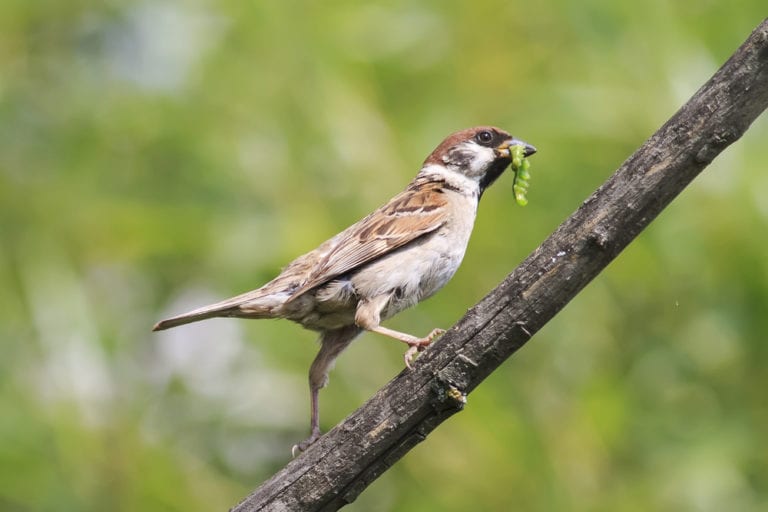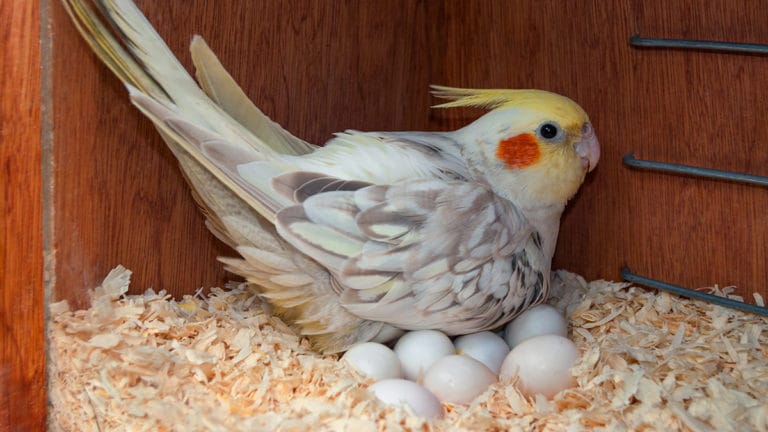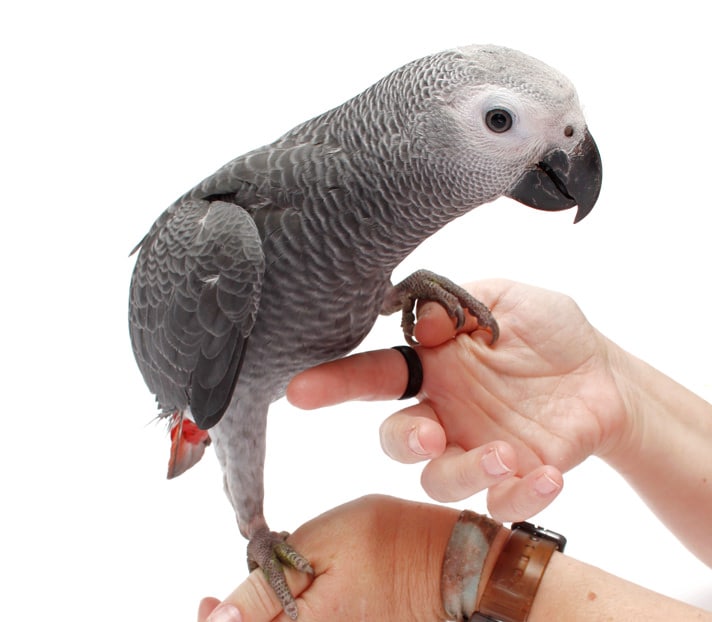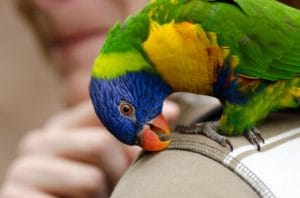Q.
I have two pairs of zebra finches in a flight cage with a center separation due to constant fighting between pairs. One pair recently had three babies and the other pair had two, but one died. The second one was not growing, so I took it from the parents and put it in with the other three. All four are doing great, but the parents are picking feathers off all four of the babies. What does this mean?
A.
The usual explanation for parent zebra finches picking at the babies’ feathers is that they are desperate for nesting material. The male zebra finch is eager to build a fresh nest and start another family before his current babies are fledged. When no nesting material is available, the parents sometimes pluck their babies for building supplies. Normally this kind of picking is not too serious, but you can deter it. Do not offer more nesting material when eggs or babies are already in the nest.
Male zebra finches can become so stimulated when given fresh nesting material that they build a new nest right over a current one. I once had a male zebra finch build a nest directly on the backs of his mate and babies. All that could be seen of his baffled zebra finch family were their eyes and beaks poking out! Place a few canary tassel-type toys around the cage or a few strands of clean jute string tied near a perch to distract an overzealous zebra finch from picking at his babies. These toys look like nesting material to the bird but do not detach from the cage bars as he tugs at it. If these distractions do not stop the male from plucking his babies, remove him from his family temporarily.
The female will care for the babies on her own. Once the babies fledge, they can be placed with their father so their mother can rest as he assumes feeding duties. If you use a cage with a wire divider, the female can help feed the babies without the male pestering her to mate. Once separated from the female in this way, the male’s picking behavior usually stops. Its the presence of the female and nest which motivates the plucking. Sounds like just a few simple adjustments are all that’s needed for your zebra finch flock to be happy and productive.
Keep 3 Or More Zebra Finch Pairs
When I was new to birds, a friend cautioned me about housing two pairs of finches together. It created a dynamic that led to fighting and poor breeding.
I tried an experiment and set up four 18- by 18- by 30-inch cages with two pairs of zebra finches and two nest baskets in each. The bickering began almost immediately. The birds raided each others nests for material, attempted to control food dishes and antagonized each other. Over the next three months, only about half the pairs attempted breeding. Those that did nest, produced few babies. Most of the birds seemed too preoccupied with harassing the neighbors to raise a family.
Then I added a third pair of zebras to all four cages. After some initial excitement and confusion, the cages now housing three pairs were suddenly peaceful and productive. I’ve repeated this experiment with parrot finches, Gouldians and cherry-headed finches, and the results were similar. A practical rule of thumb for housing finches is one pair, three pairs (or more), but never two pairs per enclosure. If zebra finches are overcrowded, a pecking order quickly emerges, and individual birds tend to fall into a distinct social order according to age, dominance, health and other factors. Under such conditions, lower ranking and young birds can suffer from insufficient food and bullying. Interestingly, light colored (mutation) birds almost invariably endure the worst aggression.
Rule of Thumb For Zebra Finches
- Don’t house two pairs together. Add at least one more pair of zebra finches before moving the birds into a flight cage.
- Introduce the birds into a new area simultaneously to avoid territorial aggression.
- Have multiple feeding stations to prevent dominant finches from guarding the food.
- Plan about 2.5 square feet of space for each pair. For a same-sex flight, have 2-square feet of space for every two birds. (With an all-female flight, don’t offer nests to discourage excessive egg laying).
Posted By: Chewy Editorial
Featured Image: Via Cheep/Flickr
Share:

